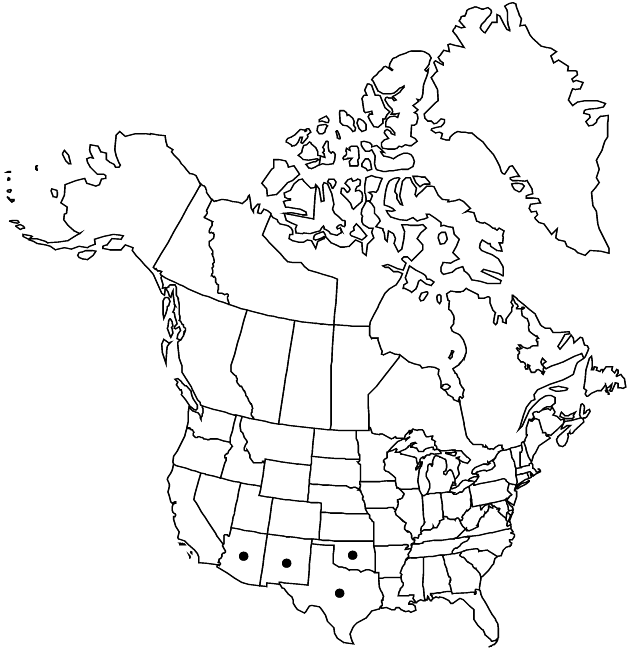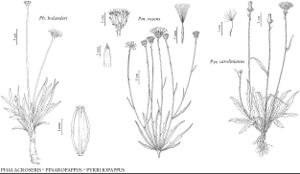Pinaropappus roseus
Syn. Gen. Compos., 143. 1832.
Perennials, 10–40 cm. Stems 1–20+, bases relatively thin. Leaf blades narrowly oblanceolate, 4–12 cm × 2–15 mm; mid cauline often reduced to linear or minute bracts. Involucres campanulate, 10–15 × 12–20 mm. Phyllaries ovate to narrowly lanceolate, unequal, 2–14 mm, apices dark brown, obtuse to acute. Paleae 12–18 mm. Florets 20–40; corollas pale pink abaxially, white to yellow adaxially, 15–18 mm. Cypselae 5–6 mm; pappi 4–7 mm. 2n = 18.
Phenology: Flowering Mar–Aug.
Habitat: Open limestone areas, roadsides, cliffs, open grassy flats
Elevation: 50–2600 m
Distribution

Ariz., N.Mex., Okla., Tex., Mexico.
Discussion
At flowering, phyllaries of Pinaropappus roseus are pale green with margins suffused with pink. On fresh specimens, the dark brown tips are distinctive. Specimens from the mountains of southeastern Arizona and southwestern New Mexico with stems leafy beyond the middles have been recognized as var. foliosus; that trait appears to be widespread and part of the normal range of variation for the species.
Selected References
None.
